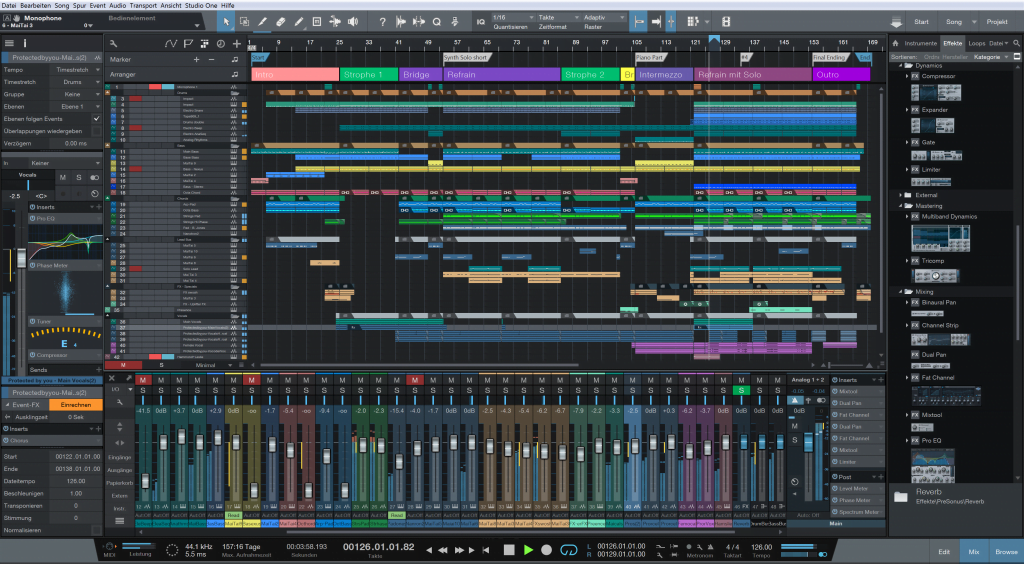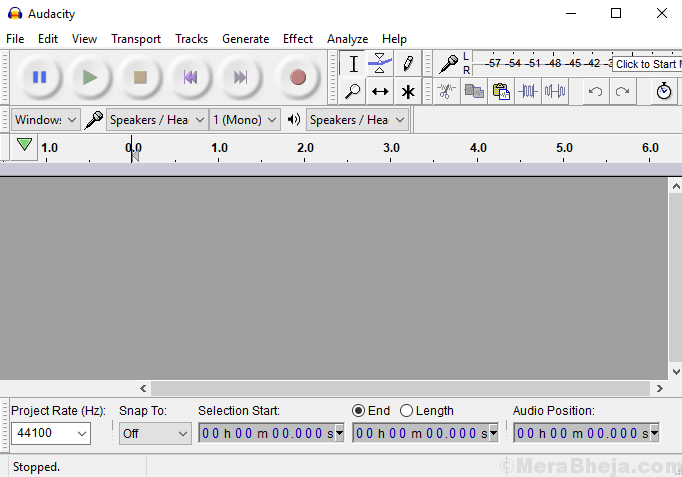All Music Programs For Mac
This section only includes software, not services. For services programs like Spotify, Pandora, Prime Music, etc. See Comparison of on-demand streaming music services.Likewise, list includes music RSS apps, widgets and software, but for a list of actual feeds, see Comparison of feed aggregators.For music broadcast software lists in the cloud, see Content delivery network and Comparison of. Best Mac for musicians if money is no object: Mac Pro. Buy Mac Pro here. If you're made of money, by all means ignore our advice regarding the iMac and MacBook Pro and buy a Mac Pro - one of it's.

Migration Assistant copies all of your files to your new Mac so that you don't have to copy your files manually.
- If your files are currently on a Windows PC, follow the PC migration steps instead.
- If your new Mac is using OS X Mountain Lion v10.8 or earlier, follow the Mountain Lion migration steps instead.
Check software, settings, and power
- Install all available Apple software updates on both Mac computers. Install any updates for your third-party apps as well.
- Make sure that your old Mac is using OS X Lion or later.
- Make sure that your old Mac has a computer name: Choose Apple menu > System Preferences, then click Sharing and check the Computer Name field.
- Connect both computers to AC power.
Connect the computers to each other
- If both computers are using macOS Sierra or later, just make sure that they're near each other and have Wi-Fi turned on. If either is using OS X El Capitan or earlier, connect them to the same network using Wi-Fi or Ethernet.
- Or connect them using target disk mode and the appropriate cable or adapter. Then start up your old computer in target disk mode.
- Or connect your new Mac to a Time Machine backup of your old Mac.
Use Migration Assistant
On your new Mac:
- Open Migration Assistant, which is in the Utilities folder of your Applications folder.
- Click Continue.
- When asked how you want to transfer your information, select the option to transfer from a Mac, Time Machine backup, or startup disk.
- Click Continue.
On your old Mac:
If you started your old Mac in target disk mode or are migrating from a Time Machine backup, skip these four steps.

- Open Migration Assistant.
- Click Continue.
- When asked how you want to transfer your information, select the option to transfer to another Mac.
- Click Continue.
On your new Mac:
- When asked to select a Mac, Time Machine backup, or other startup disk, click the appropriate icon.
- Click Continue. You might see a security code.
On your old Mac:
If you started your old Mac in target disk mode or are migrating from a Time Machine backup, skip these two steps.
- If you see a security code, make sure that it's the same code as on your new Mac.
- Click Continue.
Youtube Music For Mac

On your new Mac:
- Choose the backup to transfer information from.
- Click Continue.
Continuing on your new Mac:
- Select the information to transfer from the backup.
- Click Continue to start the transfer. If you have a lot of content, the transfer might take several hours to finish.
In the example above, John Appleseed is a macOS user account. If you transfer an account that has the same name as an account on your new Mac, you're asked to rename the old account or replace the one on your new Mac. If you rename, the old account appears as a separate user on your new Mac, with a separate home folder and login. If you replace, the old account overwrites the account on your new Mac, including everything in its home folder.

After Migration Assistant is done, log in to the migrated account on your new Mac to see its files. If you're not keeping your old Mac, learn what to do before you sell, give away, or trade in your old Mac.
Although OS X might have a reputation as the platform of choice for digital music production, there are hundreds of great music programs for PC that offer similar or better features than their Mac counterparts.
From industry standards like Ableton Live and FL Studio to free music production software like Audacity, read on to learn about the five best music programs for PC for music recording, mixing and production.
Do you want to learn how to produce electronic music on your PC? Learn the basics of music production, from choosing great synths and samples to mixing your tracks for the perfect sound in The Practical Way: Learn Electronic Music Production.
Ableton Live
Known as a DAW, or digital audio workstation, Ableton Live is one of the top music production platforms available today. Popular among DJs and producers for studio recordings and live work, Ableton Live is a powerful and versatile application.
Ableton Live is available for both PC and Mac, and the PC version offers the same set of functions as the Mac edition. Some of Live’s coolest features include audio to MIDI conversion and an excellent MIDI editing interface for digital music producers.
With a wide variety of built-in synths, sounds and samples, Ableton Live is a great composition toolkit for digital producers. It’s also supported by a huge variety of third-party synths and plugins to give producers a huge level of sound control.
Designed as both a production studio and a live performance instrument, Ableton Live is compatible with the Ableton Push MIDI control pad. This compatibility and live performance design has made it a favorite of today’s most popular DJs.
Although its high price tag (Ableton Live starts at $449) means it’s best suited to the professional producer, Live’s simple user interface and massive range of sounds are two of its biggest appeals for beginner digital music producers.
Would you like to learn how to use Ableton Live to produce your own tracks? Learn how to produce your own house, trance and techno anthems using Ableton Live in our Introduction to Electronic Music Production with Ableton course.
FL Studio
Formerly known as ‘Fruity Loops’ and regarded as a beginner application, FL Studio has since evolved into one of the most powerful and user-friendly DAWs available at the moment.
FL Studio comes in several varieties, ranging from a stripped-down entry-level app to the full Signature Bundle. Users can upgrade easily to more powerful editions of the software, making it a great choice for beginners interested in music production.
Despite its beginner-friendly price structure and user-friendly interface, FL Studio’s massive range of features has made it a favorite of well-known producers like Avicii, Deadmau5, BT and Afrojack.
With a unique workflow that makes it easy to turn your musical ideas into a reality quickly, FL Studio is perfect for jotting down basic beats and melodies before they become complete tracks.
It’s also one of the most widely used DAWs, with an audience almost as big as that of Ableton Live. This makes third-party plugins and sample packs plentiful and easy to install.
Are you ready to start producing music on your PC with FL Studio? Learn the basics of creating your own tracks using FL Studio, from sampling to creating beats, with The Basics of FL Studio and Dance Music Production.
Cubase
Developed by audio software and hardware giant Steinberg, Cubase is one of the most popular electronic music production workstations for PC. Launched in 1989 for the Atari ST computer, it’s also one of the oldest DAW brands on the market.
Although Cubase is popular with amateur music producers, it’s most widely used in the studio. Priced at £488 and built for powerful hardware, Cubase helped pioneer a variety of features that are now standard in other digital audio workstations.
Used by well-known producers like Justice, Kraftwerk, Pendulum, and more, Cubase is widely used in the electronic dance music community. It’s also popular in the film composition world, used by well-known composers such as Hans Zimmer.
With its hefty price tag and powerful hardware requirements, Cubase might not be the most accessible music program for PC. However, it’s undoubtedly one of the top music production programs for those with the budget – and hardware – to run it.
Do you want to learn how to produce electronic music like a true professional? The Professional Way: Learn Electronic Music Production will teach you the basics of producing your own tracks using DAW software like Cubase.
Reason
Developed by Propellerhead, Reason is a popular music production application that gives users a huge amount of functionality right out of the box. With a simple UI and tons of plugins, it’s a great digital audio workstation for beginners and experts alike.
One of Reason’s biggest selling points is its Rack Extensions – unique effects, sounds and instruments that can be ‘plugged in’ to the standard Reason interface to expand its range as a musical workstation.
Arguably Reason’s biggest benefit over its competitors is its interface. Designed as a self-contained application that does everything on its own, Reason feels more like an old-fashioned mixing board and effects rack than many other DAWs.
Reason is available for PC and Mac, with few functional differences between the two applications. Priced from £349, Reason isn’t as affordable as some of the other DAW programs on our list, but it’s still a great choice for any serious music producer.
Would you like to make Reason your digital audio workstation of choice? Read our blog post on electronic music production to learn the basics of working with a DAW application like Reason to create your own tracks.
Audacity
Applications like Reason and Ableton Live offer massive power, but at a price. With Ableton Live starting from $449 and Reason priced from £349 upwards, neither are particularly accessible for beginner music producers.
Audacity is a free music recording and production application for Windows. What it lacks in power it makes up for in its simple user interface, wide variety of functions and its excellent price point: zero dollars.
Download Music On Mac
Unlike the digital audio workstations above, Audacity is far more of an audio editing app than a full production workstation. Nevertheless, it does have some production capabilities and can be used to produce basic tracks, remixes and mash-ups.
Best Music Programs For Mac
Do you want to learn the basics of music production on a limited budget? Learn how to produce your own tracks, remixes, remasters and mash-ups using Audacity in our Audacity Crash Course.
